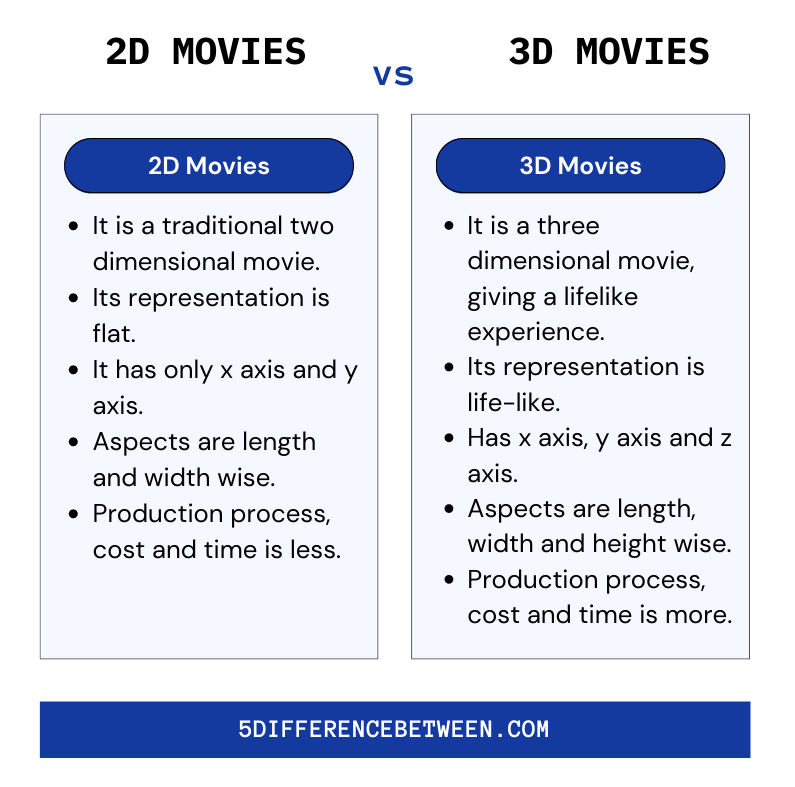2D and 3D films are two distinct types of films that have been around for a long time. The main difference is that 2D films are viewed in a two-dimensional plane, whereas 3D films are viewed in a three-dimensional plane. While both types of films can provide an immersive experience, the visual effects and production costs differ. Let us explore the difference between 2d and 3d movies.
What is a 2D Movie?
Two-dimensional (2D) animation, graphics, and other visual elements are used in two-dimensional (2D) films. The graphics are designed to give viewers a three-dimensional (3D) experience. While a 2d movies does not provide the same level of immersion as a 3D film, it can still provide an enjoyable cinematic experience. Hand-drawn or computer-generated animation is commonly used to create the visual elements. Characters, settings, and other story elements can be created using this animation. In contrast to 3D films, which employ specialized tools and techniques to achieve a realistic sense of depth, 2D films rely on the artist’s skill to create a believable world.
Also Read > Difference Between Movie and Film
Two-dimensional films can tell any story, from fantasy and adventure to drama and comedy. These films can also be used to investigate themes and ideas that would be difficult to convey in 3D. Surreal and abstract visuals, for example, are frequently used in animated films to convey complex emotions and feelings. Despite the fact that these films have been around for decades, the technology and techniques used to produce them have advanced significantly in recent years.
What is a 3D Movie?
A three-dimensional film is one that uses the illusion of depth perception to immerse the audience in the viewing experience. In this technique, the same image is shown from two slightly different angles. After that, the audience is given special glasses that divide the images, allowing one eye to see one image while the other sees another. This gives the impression of being inside the film and creates the illusion of depth perception.
In recent years, 3D movies have grown in popularity, and they are now used to show blockbuster films, animated films, and even documentaries. The technology that powers 3D films has been around for decades, with the first examples appearing in the 1950s. However, 3D films did not become popular until the 1980s and 1990s. The main benefit of these films is that they provide a one-of-a-kind and immersive viewing experience.
The images appear to be coming at the audience from all sides, giving the impression that the audience is inside the film. As a result, the viewing experience is much more interesting and enjoyable. These movies provide viewers with a greater sense of realism in addition to a more immersive viewing experience. Depth perception can enhance the viewing experience by making the audience feel as if they are truly inside the film.
2D Vs 3D Movies

Moviegoers can enjoy a one-of-a-kind viewing experience by watching 2D and 3D films. 3D movies offer a more immersive experience by adding depth and realism, whereas 2D films are still popular due to their traditional viewing style. Both formats have advantages and disadvantages, and it is up to the individual to choose which is best for them. Finally, 3D and 2D movies offer a wide range of entertainment options for everyone.






